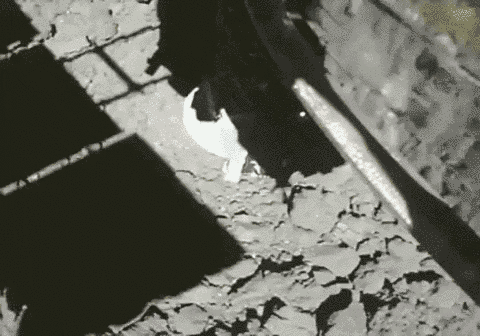Hayabusa2, Japan's mission to Ryugu and other asteroids
Highlights
- Hayabusa2 traveled to the asteroid Ryugu, deployed rovers on its surface, and brought samples back to Earth.
- The spacecraft is now on an extended mission to study more asteroids. Hayabusa2 will fly past asteroid 2001 CC21 in 2026 and rendezvous with asteroid 1998 KY26 in 2031.
- By exploring asteroids, scientists can learn about how the building blocks of planets — and life on Earth — evolved throughout the Solar System over time.
What is Hayabusa2?
Hayabusa2 (はやぶさ2)is an asteroid explorer and sample return mission developed by the Japan Aerospace Exploration Agency (JAXA). The spacecraft launched in 2014 on a mission to survey the asteroid Ryugu, deploy rovers to its surface, and bring back samples to Earth. Hayabusa2 successfully returned samples to Earth in 2020. Since then, scientists have been studying them to learn more about how Ryugu formed and what the Solar System used to be like.
Because Hayabusa2 is still healthy, JAXA has sent it on an extended mission to visit two more asteroids. The spacecraft will fly by asteroid 2001 CC21 once in 2026 and Earth two times in 2027 and 2028 before arriving at asteroid 1998 KY26 in 2031.
Why collect samples from an asteroid?
Asteroids act as windows into the Solar System’s past. Many are leftovers from the formation of the planets 4.6 billion years ago, and asteroid impacts may have been key to the establishment of water and organic compounds — fundamental ingredients for life as we know it — on our planet. At the same time, asteroids are well-preserved compared to Earth’s surface, which is constantly being shaped by weather and geological processes. Studying the ages and compositions of different types of asteroids gives scientists important clues about how our Solar System evolved.
While we can learn a lot about asteroids from spacecraft, certain kinds of experiments can only be done on Earth. To completely uncover what asteroids have to tell us, we rely on missions to bring back samples.

The mission so far
Hayabusa2 arrived at the asteroid Ryugu in 2018. After a few months of orbiting the asteroid and studying it from afar, the spacecraft dropped two small, drum-shaped rovers onto the surface of Ryugu called MINERVA-II1A and MINERVA-II1B. A couple of weeks later, it dropped a third rover, called the Mobile Asteroid Surface Scout (MASCOT), which hopped around the surface for about 17 hours. A fourth rover, MINERVA-II2, failed before it was dropped, but was still used in a more limited fashion.
To assist with navigation around Ryugu, Hayabusa2 carried five baseball-like target markers that it dropped onto the asteroid. The markers contained names collected by The Planetary Society and JAXA in 2013. A copy of the names also flew to Ryugu and back inside the spacecraft's sample return container. You can search for your name via JAXA's website.
After the rovers completed their missions, Hayabusa2 collected samples from the surface of Ryugu using a meter-long horn extending from the bottom of the lander. When the horn touched the landing site, it fired a bullet-like projectile that kicked surface material up the horn into the sample container. Later, Hayabusa2 also collected samples from the subsurface of Ryugu by creating an artificial crater. The spacecraft’s Small Carry-on Impactor (SCI) experiment fired a copper plate into the surface to expose fresh asteroid material for sample collection.

Hayabusa2 transferred the sample container into a re-entry capsule, and the spacecraft dropped the return capsule into Earth's atmosphere on Dec. 5, 2020. The capsule landed in Woomera, Australia, and JAXA collaborated with the Australian Space Agency on its recovery. Some of the asteroid sample was taken to the Japanese Extraterrestrial Sample Curation Center, while others were traded for samples brought back by NASA’s OSIRIS-REx mission from the asteroid Bennu.
Ryugu is a carbonaceous asteroid. Hayabusa2’s exploration showed that other, similar asteroids would likely burn up in Earth’s atmosphere, explaining why scientists had discovered fewer carbonaceous meteorites than expected. The Ryugu samples also contained organic molecules that likely formed around water.
How does Hayabusa2 work?
Hayabusa2 is equipped with a variety of remote sensing instruments to study Ryugu and other asteroids. The spacecraft uses a laser altimeter (LIDAR) to create 3D maps of targets, a thermal infrared imager (TIR) to measure temperatures, and a spectrometer to determine the composition of surface minerals. There are also several Optical Navigation Cameras (ONCs) that help orient Hayabusa2 when it’s near asteroids.
All of these instruments were built by JAXA. So were the rovers, except for MASCOT, which was jointly developed by Germany at the German Aerospace Center (DLR) and France at the French National Center for Space Studies (CNES).
What’s the difference between Hayabusa and Hayabusa2?
The Hayabusa2 project is different from Hayabusa, which was a previous Japanese space mission to explore the asteroid Itokawa. The Hayabusa mission was the first ever to return an asteroid sample to Earth.
Academic resources
Yada, T., Abe, M., Okada, T., Nakato, A., Yogata, K., Miyazaki, A., Hatakeda, K., Kumagai, K., Nishimura, M., Hitomi, Y., Soejima, H., Yoshitake, M., Iwamae, A., Furuya, S., Uesugi, M., Karouji, Y., Usui, T., Hayashi, T., Yamamoto, D., … Tsuda, Y. (2021). Preliminary analysis of the Hayabusa2 samples returned from C-Type asteroid Ryugu. Nature Astronomy, 6(2), 214–220.
Tsuda, Y., Yoshikawa, M., Saiki, T., Nakazawa, S., & Watanabe, S.-ichiro. (2019). Hayabusa2–sample return and Kinetic Impact Mission to near-earth asteroid Ryugu. Acta Astronautica, 156, 387–393.
Support missions like Hayabusa2
Whether it's advocating, teaching, inspiring, or learning, you can do something for space, right now. Let's get to work.


 Explore Worlds
Explore Worlds Find Life
Find Life Defend Earth
Defend Earth


